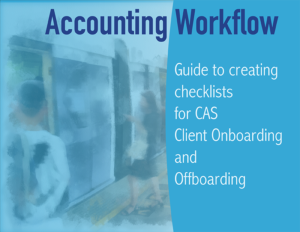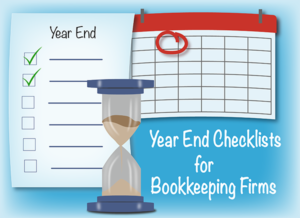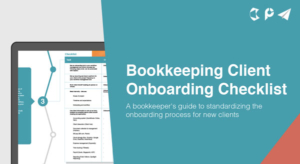At its most basic level, an engagement letter is a contract between a bookkeeping firm and its client that outlines the firm’s services, fees, and the responsibilities of both parties. If you take the time to craft a good engagement letter, it not only becomes an important tool in finalizing the sales process but also serves as a helpful first step in a smooth customer onboarding process.
Why you need an engagement letter
An engagement letter is a contract that can serve as an important legal document if a dispute arises. In addition, because an engagement letter clearly defines the services and fees, it’s an essential tool in preventing scope creep.
If your firm is registered with a professional body, an engagement letter might be mandatory.
What to include in your engagement letter
It never hurts to start with a template when you’re writing an engagement letter. If you belong to a professional organization like the AICPA or the IPBC, they most likely have templates available. Apps like Practice Ignition also provide engagement letter templates as part of their product. For that matter, a simple Google search for “bookkeeping engagement letter template” returns 861,000 results! Finding a starting point should be easy.
Once you’ve found a template that looks good to you, it’s important to edit the template so that it reflects the way your firm does business. Modify the language where possible so that the terms are clear and concise. Your engagement letter should include the following:
- Identification of the parties. This may seem obvious, but it is necessary to specify that the agreement is between your firm and the business or individual you’re contracting with. It also helps make it clear that when you’re agreeing to do the bookkeeping for Bob’s Plumbing you’re not also agreeing to do the bookkeeping for his wife’s consulting business.
- Scope of work. This is where you list the services your firm will provide, how often you’ll provide them, and (if it’s important to your firm) the tools you plan on using. When you list the services, make sure to be as specific as possible. Instead of listing “reconcile checking and savings accounts” you should state “reconcile up to 5 checking or savings accounts and up to 3 credit card accounts monthly”. If you’re going to be performing any one-time services, like a QuickBooks clean-up or conversion, specify what the completed service will look like so that you and the client are clear on what “Done” is.
- Fees. Here you will specify how much your services will cost the client and how you expect to get paid. Are you billing by the hour or do you charge a fixed monthly fee? Will you send an invoice or automatically deduct the fees from a bank account? If you send an invoice, make sure to specify what happens if the invoice is not paid on time.
- Client’s responsibilities. List the information and documents the client needs to provide and any tasks they are responsible for. Make sure you state how often they need to fulfill their responsibilities, including deadlines where applicable. You should also state here what happens when the client does not fulfill their obligations promptly.
- The length of the engagement. It is important to renew your engagement letters regularly, preferably annually. Your costs will be increasing over time, so you need a built-in vehicle to raise your prices. Renewing an engagement letter annually also encourages you to review the services your firm has provided over the past 12 months and evaluate if the scope has changed. In addition, annually reviewing your engagements, gives you a chance to touch bases with your clients and an opportunity to provide more services to your existing clients.
- Specify what happens if you and the client part ways. Clients change bookkeepers for a variety of reasons. At some point, this client might move on too. It’s important to have an agreement up front on what the process will be if that happens. What happens to any software subscriptions? Does that client have the right to ask for copies of the processes you’ve written for doing their bookkeeping? What happens to client documents you may be storing? How much time and effort are you going to put into working with their new bookkeeping firm to help the transition?
- Tell the client how to proceed. After you’ve clearly outlined the proposed engagement, make sure it’s very clear how the client accepts the agreement!
Consult a legal professional
When you’ve crafted your perfect engagement letter, you should consult a legal professional. They will be familiar with any requirements unique to your location and if there is specific language required by your professional designation. Taking this final step to polish your engagement letter requires a small investment upfront that will more than pay for itself down the road in the event any dispute arises.











